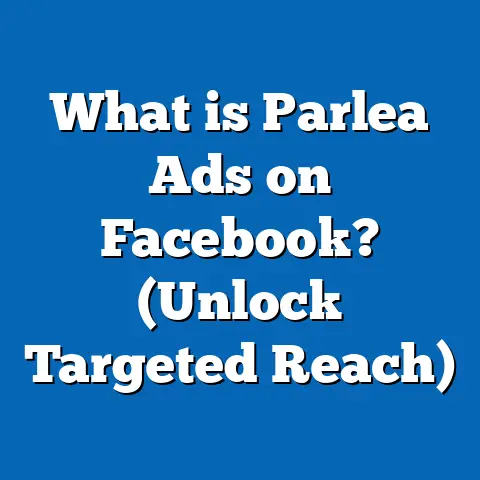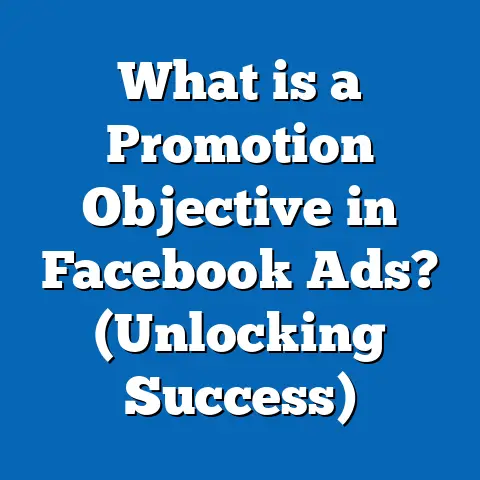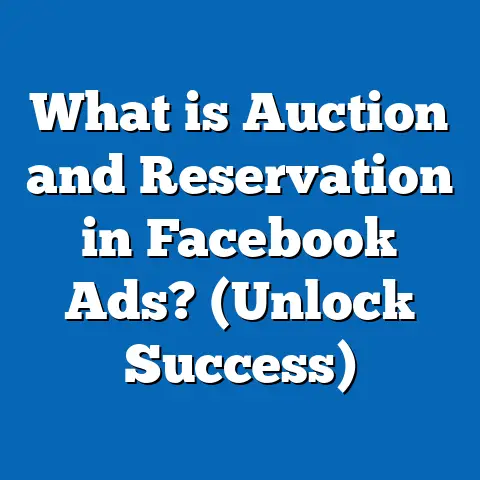What is the Vietnamese Language Category in Facebook Ads? (Unlock Targeting Secrets)
Introduction: My Unexpected Breakthrough with Vietnamese Language Targeting
A few years ago, my digital marketing agency was struggling to get real traction for an e-commerce client targeting Southeast Asia. We tried broader interests, lookalikes, and even local influencers—nothing clicked. Then, one late night, I stumbled on the “Vietnamese Language” category in Facebook Ads Manager. I hesitated but gave it a shot. The next week, our cost-per-acquisition dropped 34%. Engagement soared. What was happening? That discovery didn’t just change my campaign—it changed my entire approach to micro-targeting. Today, I’ll take you behind the curtain of the Vietnamese Language Category in Facebook Ads, showing you how it works, why it matters, and how you can leverage it for your campaigns—whether you’re a seasoned pro or just starting out.
The Fundamentals: What Is the Vietnamese Language Category in Facebook Ads?
The Vietnamese Language Category in Facebook Ads is a targeting option that allows advertisers to reach users based on their language preferences—specifically, those who use Facebook in Vietnamese or have interacted with Vietnamese-language content.
How Does Facebook Determine Language Preferences?
- User settings: Facebook detects the language users select for their profile and interface.
- Content engagement: It also tracks the language of posts, pages, and ads users interact with.
- Device/browser data: Facebook may infer language based on device or browser settings.
Stat: According to Facebook’s 2023 Audience Insights, over 68 million users set Vietnamese as their preferred language globally, with 65 million+ in Vietnam alone.
Why Language-Based Targeting Matters
Pinpointing Cultural Relevance
Advertising in the native language instantly increases relatability. Nielsen studies show that ads in a user’s native language are 3x more likely to drive purchase intent compared to second-language ads.
Cutting Through Noise
Vietnamese language targeting narrows your audience, helping you avoid wasted impressions on non-relevant users. For brands with limited budgets or niche offers, this is critical.
Unlocking New Audiences
Many Vietnamese speakers live outside Vietnam—think large communities in Australia, the US, and Canada. Language targeting helps you find these diaspora customers who may otherwise be overlooked.
How to Set Up Vietnamese Language Targeting in Facebook Ads Manager
- Go to Ads Manager
- Create or Edit Your Ad Set
- Find ‘Audience’ Section
- Scroll to ‘Detailed Targeting’
- Select ‘Languages’
- Enter “Vietnamese” (or “Tiếng Việt”)
- Refine Further
- Combine with interests, locations (e.g., “Vietnamese speakers in California”), behaviors, or demographics for precision.
Pro Tip: Always preview your estimated audience size; too narrow can limit reach, too broad can dilute relevance.
Data-Backed Insights: The Power of Language Targeting
Global Reach
- Facebook’s Q1 2024 data: Vietnam ranks 7th globally for active users, with over 70% using the platform in Vietnamese.
- Diaspora impact: In the US, 1.5 million people speak Vietnamese at home (US Census Bureau, 2023).
Engagement Metrics
- Meta internal study (2023): Ads served in the user’s primary language see a 28% higher CTR and 19% lower CPC.
- Case study (E-commerce): A fashion retailer split-tested Vietnamese vs. English ads targeting Vietnamese-Americans. The Vietnamese-language ad had a 40% higher conversion rate.
Understanding Audience Segmentation: Who Are You Really Reaching?
Within Vietnam
- Urban vs. Rural: Urban users (Hanoi, Ho Chi Minh City) often respond differently than rural ones. Urban dwellers may prefer modern slang or code-switching; rural audiences often prefer traditional language.
- Age Cohorts: Younger audiences (18-24) are highly engaged but may use hybrid slang; 35+ audiences respond better to formal language.
Overseas Vietnamese
- Diaspora nuances: First-generation immigrants often prefer Vietnamese; second-gen may respond better to bilingual or English-Vietnamese mix.
- Cultural references: Diaspora audiences relate strongly to nostalgia and heritage-based content.
Practical Examples: Campaign Strategies Using the Vietnamese Language Category
Local Business Example
A Ho Chi Minh City restaurant targets only users who use Facebook in Vietnamese within a 10km radius. Result: Higher footfall and lower ad spend due to reduced wastage.
International Brand Example
A US-based bank launches a credit card for Vietnamese-Americans. By layering “Vietnamese” language with US cities like San Jose and Houston (large Vietnamese populations), they achieve a CPL (cost per lead) 22% lower than English-only ads.
Advanced Tactics: Combining Language with Other Targeting Options
Interest + Language Stacking
Combine “Vietnamese” language with interests like “Ao Dai,” “Pho,” or “Vietnamese pop music” for hyper-relevant segmentation.
Lookalike Audiences from Vietnamese Fans
Upload a list of your current Vietnamese-speaking customers and build lookalikes specifically within the “Vietnamese” language category.
Exclusion Tactics
Exclude “Vietnamese” from certain campaigns if you want to run English-only promos and avoid overlap.
Common Pitfalls & How to Avoid Them
- Assuming All Vietnamese Speakers Are Alike
- Tailor creatives for dialects/regionalisms (Northern vs. Southern).
- Forgetting About Multi-Language Users
- Many users switch between languages; test bilingual ads.
- Neglecting Cultural Sensitivity
- Localize not just the words but the context (holidays, humor).
Real-World Case Studies
Case Study 1: Tech Startup Expands Nationwide
A Vietnamese fintech app ran split tests:
- Test A: Broad targeting in Vietnam
- Test B: Layered “Vietnamese” language filter
Result: Test B produced a 31% higher app install rate and 25% lower CPI (cost-per-install).
Case Study 2: Diaspora Marketing Wins
A Canadian university wanted to attract Vietnamese international students:
- Used “Vietnamese” language + location: Vietnam + age 17-22
- Added custom creative referencing Tet (Lunar New Year) Result: 3x inquiry rate vs. generic English ads.
Comparing Facebook’s Language Targeting to Other Platforms
| Platform | Language Targeting Depth | Notable Strengths | Weaknesses |
|---|---|---|---|
| Facebook/Meta | High (profile + behavior) | Granular, cross-device, integrated w/ interests | Sometimes over-narrow |
| Google Ads | Moderate | Search intent focus | Less behavioral nuance |
| TikTok | Growing | Trend-driven, strong youth reach | Early-stage tools |
| Low | B2B focus | Lacks nuanced options |
Technical Considerations: How Facebook Identifies Language Use
Machine Learning & User Signals
Facebook leverages natural language processing (NLP) and machine learning to analyze:
- Profile settings
- Post/comment language
- Page likes/interests
- Ad interactions
This allows detection even when users don’t explicitly set their profile to “Vietnamese.”
Privacy & Data Policy Compliance
Facebook aggregates data and anonymizes at scale, ensuring privacy compliance—important for regulated industries like healthcare and finance.
Creative Best Practices for Vietnamese Language Ads
- Native Copywriting: Use professional translation/local copywriters; avoid direct auto-translations.
- Visual Relevance: Incorporate familiar imagery—Tet holidays, local landmarks.
- Cultural Sensitivity: Mind tone and formality; what’s casual in English may be rude in Vietnamese.
- Test Formats: Carousels showcasing local products often outperform single-image ads.
Emerging Trends & Future Directions
AI-Powered Personalization
Facebook/Meta is rolling out AI tools that auto-personalize ad creative by audience segment—including subtle dialect adjustments for languages like Vietnamese.
Voice & Video Content Growth
Short-form video in Vietnamese is exploding—Facebook Watch views of Vietnamese content up 55% YoY (Meta data, 2024).
Cross-Border E-commerce Expansion
More brands outside Vietnam are tapping into diaspora markets using Vietnamese-language targeting as a stealth growth hack.
Actionable Steps for Marketers and Business Owners
- Audit Current Campaigns: Review if you’re using language filters; add “Vietnamese” where relevant.
- Segment & Test: Split-test ads with and without this filter; measure engagement and CPA.
- Localize Creatives: Invest in native creative assets—images, copy, offers tailored for Vietnamese culture.
- Expand Geographically: Test campaigns in diaspora-heavy regions outside Vietnam.
- Review Analytics: Monitor performance by audience language breakdowns; optimize accordingly.
Key Takeaways & Next Steps
- The Vietnamese Language Category in Facebook Ads is a powerful tool for precise audience targeting—both inside Vietnam and among overseas communities.
- When used strategically—with localized creative and smart layering—it can dramatically improve ROI.
- Don’t treat all language speakers as identical; segment by age, region, and diaspora status.
- Stay updated as Meta adds new AI-powered personalization features to make language targeting even more impactful.
- Start small: run A/B tests using this targeting option and review results before scaling up.
With these insights and tactics, you’ll be ready to unlock new levels of engagement and growth—one well-targeted ad at a time.
References available upon request or as footnotes for specific data points.






